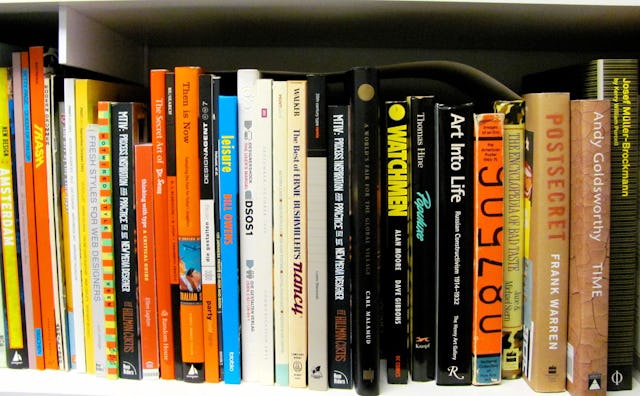Why You Should Let Your Kids Read Books That Aren't Just For Kids

I have two kids now, and one is 11, and when my 11-year-old reads, he gets excited about it. For the past year or two, I’ve been reading some of his favorites, because he asked me to. He knows I love to read the way he does, and it gives us a shared language that goes beyond our favorite TV shows. Thanks to him, I’ve read the entire Percy Jackson series by Rick Riordan and Wonder by R.J. Palacio, a marvel of a book.
When I think about the books I want to share with my son, ones I read when I was around his age, I suddenly realize that they weren’t all written for kids. Yes, I was enthralled by Madeleine L’Engle’s A Wrinkle In Time, all of C.S. Lewis’s The Chronicles of Narnia, and a fun little British series about kids who went sailing called Swallows and Amazons by Arthur Ransome, but I also had access to something that benefited me for the rest of my life: a room full of books that nobody told me to open.
Growing up, there was a room in our house where most of our toys were kept, and in that room were shelves filled with books. Nobody told me to read them, and nobody told me not to, but I made my way through those shelves and devoured everything from Howard Pyle’s The Merry Adventures of Robin Hood to John Irving’s The World According to Garp, which remains an all-time favorite to this day. I read the Greek myths and Aesop’s Fables, and I read E.L. Doctorow and Kurt Vonnegut. I even read I’m OK, You’re OK by Thomas Anthony Harris; it was the 1970s, after all. I read The Women’s Room by Marilyn French and the James Herriot books and Ordinary People by Judith Guest.
I didn’t know what I should read, only that I could read. Some were classics, lots weren’t, and because my parents both had pretty good taste, most were great. Reading was something I stumbled into because there were books around, everywhere, and once the first page grabbed me, I was off and running.
For some reason, there was a copy of Margaret Mitchell’s Gone With the Wind sitting in a drawer in our bathroom, and I read it every time I was in there (I know, I know) until I was almost done. Then something terrible happened. On page 1024, it suddenly ended in the middle of a sentence. There were no more pages. It left me hanging with ” … it was no longer the head of a young pagan prince on new-minted gold but a … “
But a … what? I went to the library and got another copy of the book. And, decades later, I still remember exactly where that sentence cut off, and the page number.
Throughout my childhood, books were everywhere, and there weren’t any we weren’t allowed to read.
So while I am careful with what my son watches on television and what movies he goes to and what video games he plays, it’s time to give him unrestricted access to the books on my shelf. Yes, there’s violence in some of them, and sex in many of them, and concepts he hasn’t had to think about yet, but that’s what reading does for us: It gives us room to think about them at our own pace. It gives us empathy, and lets us see the world not as an observer (the way movies and television do, in their charming way), but as a participant. We are inside the heads of these characters, living their lives right along with them.
I’m not going to tell him what to read, only that he can select anything he likes, whenever he likes. He can put it back if it doesn’t interest him, and I won’t ask him why.
Nothing in those “adult” books haunted me or ruined me; books don’t scar you the way a terrifying movie can, or a sex scene you’re too young for. The interpretation by the reader is everything.
Let them discover books themselves. Let them steal them from your bedside, or think they found them in a drawer. If you keep your books in one place, leave the door open. If you’re lucky, they’ll walk in.
This article was originally published on